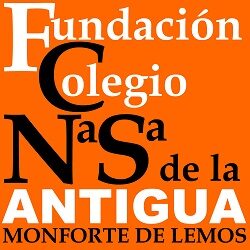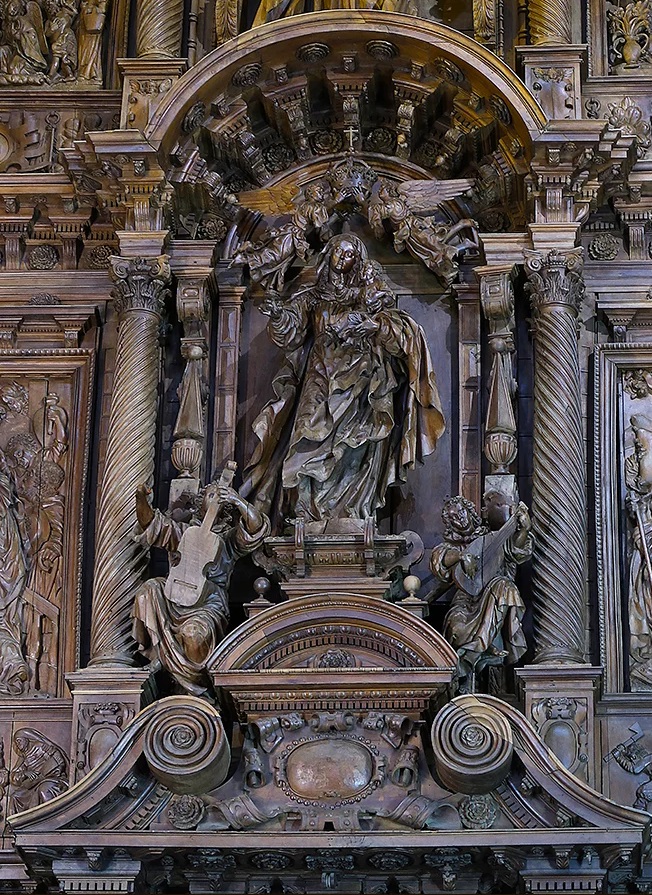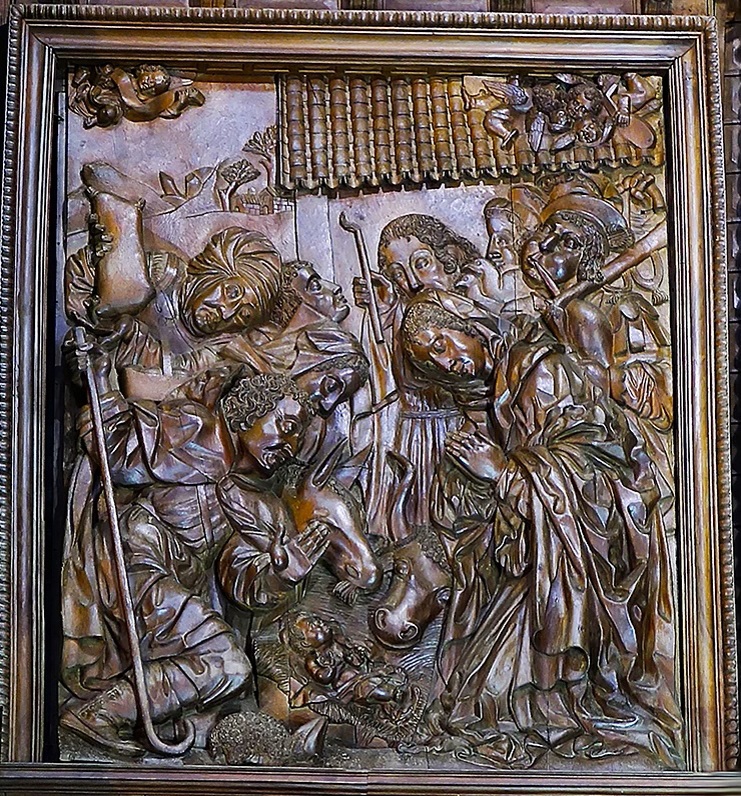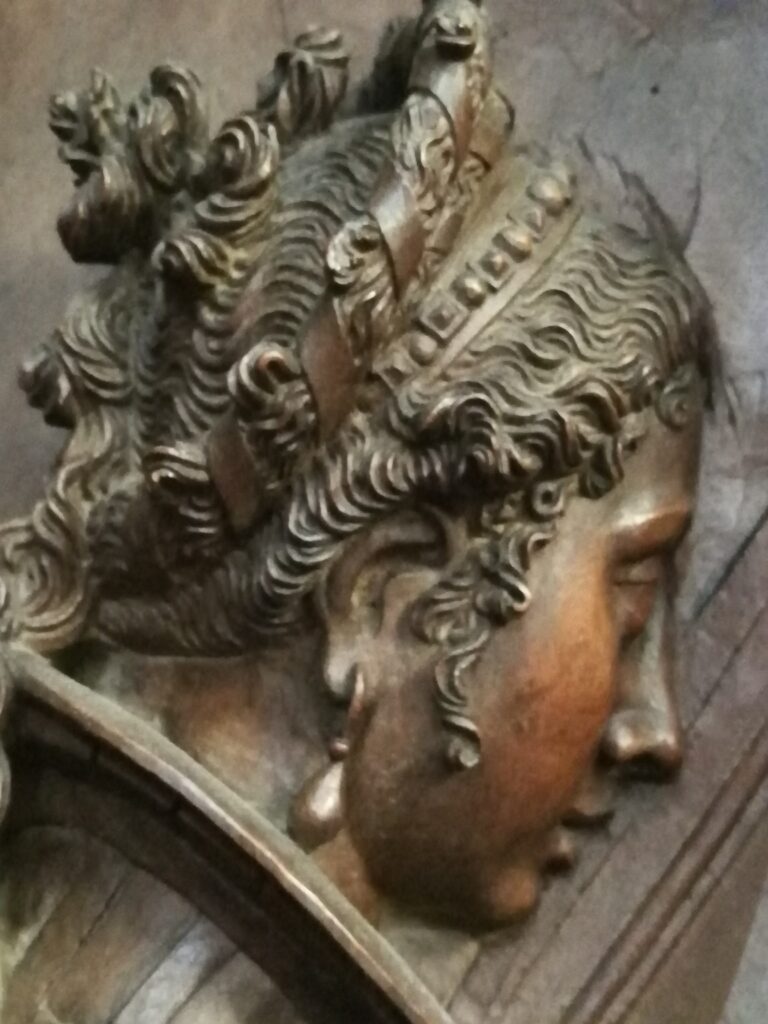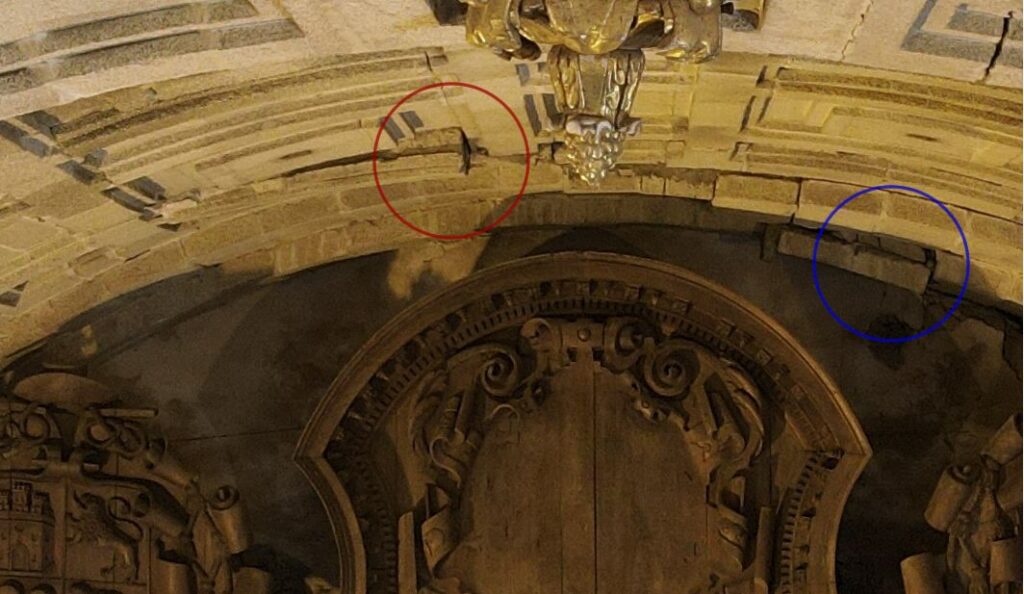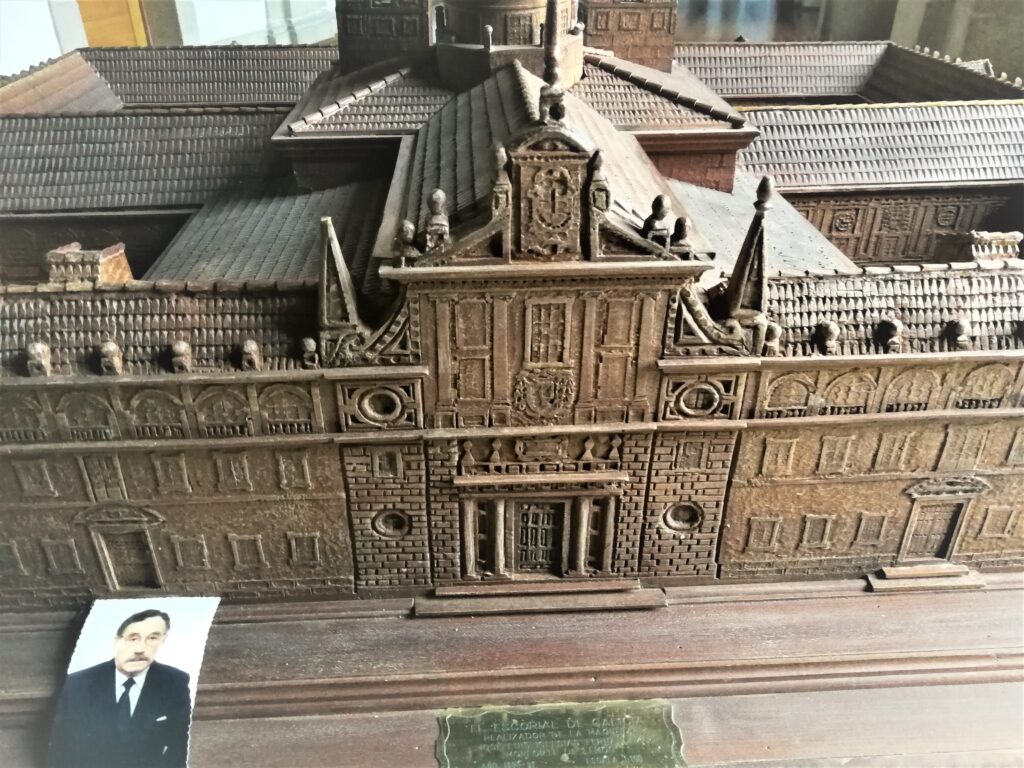A few days ago our website published some images and a simple explanation of the third body of the altarpiece by D. Francisco de Moure. Today we approach the second body. This is made up of two panels with scenes from the life of the Virgin and a magnificent central image, a free interpretation in bulk of the painting by Nª Sª de la Antigua that belonged to Cardinal Rodrigo de Castro and that by his will was transferred from his personal chapel in Seville to Monforte de Lemos.
LEFT TABLE: This is the scene of the Visitation Maria finds her cousin Isabel of her at the entrance of her house, on the access stairs. At the door of the house Zacarías, Isabel’s husband observes the scene. Five other characters surround both women, two behind María, another two peering through a window and one more in dialogue with Zacarías. The execution of this panel does not respond to the quality of the layouts of D. Francisco de Moure, and it may be one of the tables made by his son.
RIGHT TABLE: Represents the Adoration of the Shepherds. Complicated composition in which, before a child Jesus on the straws, receives the adoration of the shepherds, group on the left, before the gaze of the parents of the group on the right. Over the image of Maria, an undoubtedly Galician shepherd blows a bagpipe with all his might, putting a musical background to such a silent composition. An old woman on the left lifts a wineskin, undoubtedly full of Ribeira Sacra wine. Angels in the sky and the heads of the ox and the mule on the child complete the composition.
IMAGE OF Nª Sª DE LA ANTIGUA: Impressive is the sculptural ensemble that makes up the most central scene in the altarpiece. All framed by Renaissance architectures. Mary in the center, two musician angels at her feet, another two hold a crown on the head of Our Lady who holds the baby Jesus in her left arm and entertains him with a rose that she presents with her right hand, as in picture. Wide garments that already smell like a consolidated baroque dress Maria
We illustrate this simple comment with photos of this body of the altarpiece.

